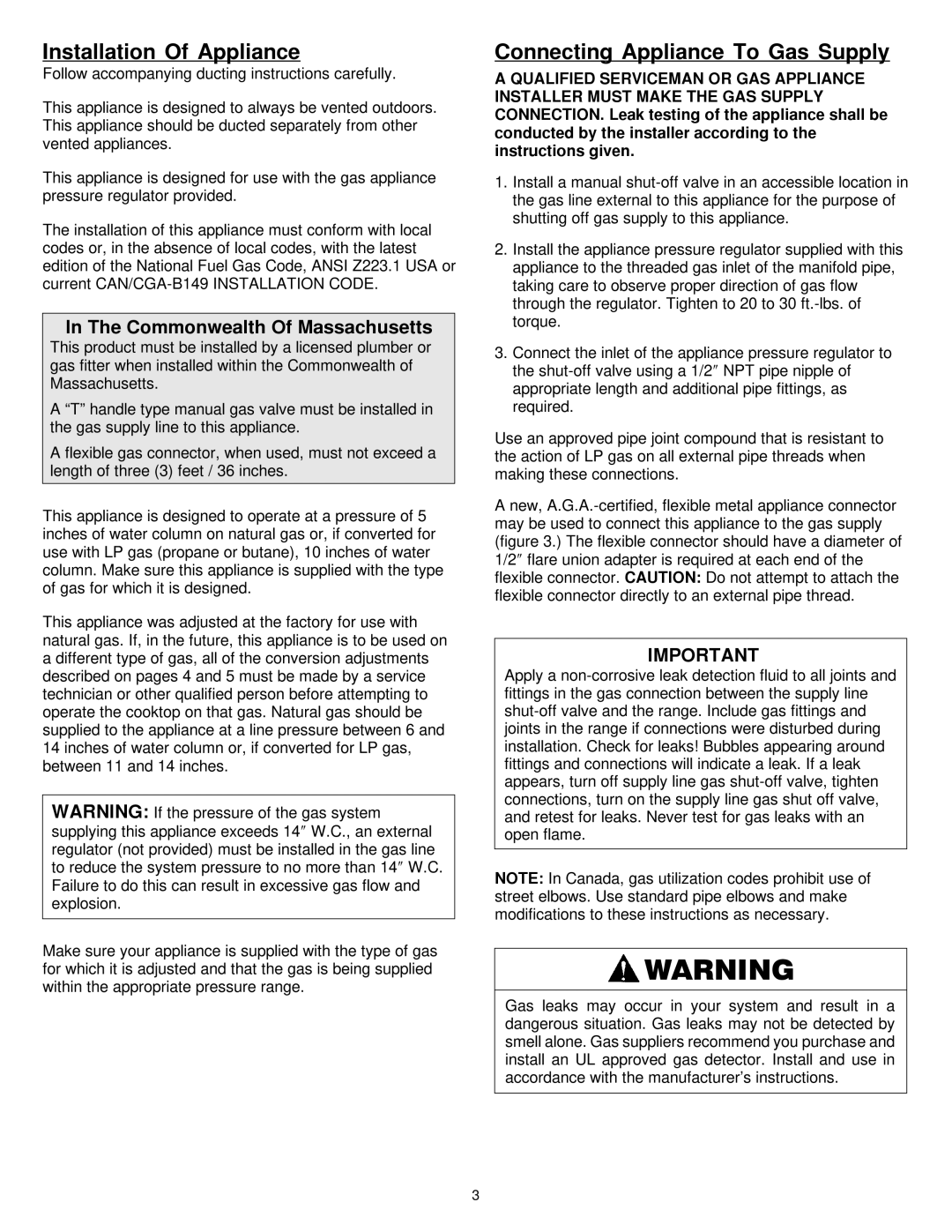8101P575-60 specifications
The Jenn-Air 8101P575-60 is a high-performance electric cooktop that exemplifies modern culinary technology and innovative design, making it a noteworthy addition to any kitchen. This versatile appliance is engineered with advanced features that cater to both casual cooks and culinary enthusiasts, providing an exceptional cooking experience.At the heart of the Jenn-Air 8101P575-60 is its powerful induction cooking technology. Induction cooktops use electromagnetic energy to directly heat the cookware, providing rapid heating and precise temperature control. As a result, this cooktop significantly reduces cooking time while ensuring consistent cooking results. The efficiency of induction cooking also means that heat is focused only on the pot or pan, keeping the kitchen cooler and reducing energy use.
One of the standout features of the Jenn-Air 8101P575-60 is its sleek, elegant design. The smooth glass surface not only enhances the aesthetic appeal of the kitchen but also makes cleaning effortless. Cooking spills and splatters can be easily wiped away, ensuring that your cooktop remains pristine with minimal effort.
The cooktop boasts multiple cooking zones, each equipped with varying power levels to accommodate a range of cooking tasks. From simmering sauces to searing meats, the Jenn-Air 8101P575-60 provides the flexibility to adapt to different cooking techniques. Additionally, the cooktop includes features like a built-in timer and a bridge element that allows for the combination of two cooking zones, ideal for larger cookware and more complex meals.
Safety is another critical aspect of the Jenn-Air 8101P575-60 design. It incorporates features such as an automatic shut-off function and a child lock, providing peace of mind for families with young children. These safety features ensure that the cooktop operates safely and efficiently, limiting the risk of accidents in the kitchen.
Another notable characteristic is the intuitive touch controls that allow for effortless adjustment of heat settings. Users can quickly fine-tune temperatures or switch between cooking zones with just a tap, making the cooking process smooth and efficient.
Overall, the Jenn-Air 8101P575-60 exemplifies the perfect blend of style and functionality. Its state-of-the-art induction technology, elegant design, versatile cooking options, and safety features make it a standout choice for anyone looking to elevate their culinary capabilities while maintaining a sophisticated kitchen environment.

